Hi GT! Even a couple of years ago, when choosing a new smartphone, it was possible to save money and buy a version with 16 gigabytes of internal memory instead of 32, or even 64.
Since then, not only the dollar rate has stepped forward, but also the technologies — cameras in smartphones began to shoot much better photos and videos, so it became not so difficult to score regular 16 gigabytes using hundreds of photos and several 4K videos.
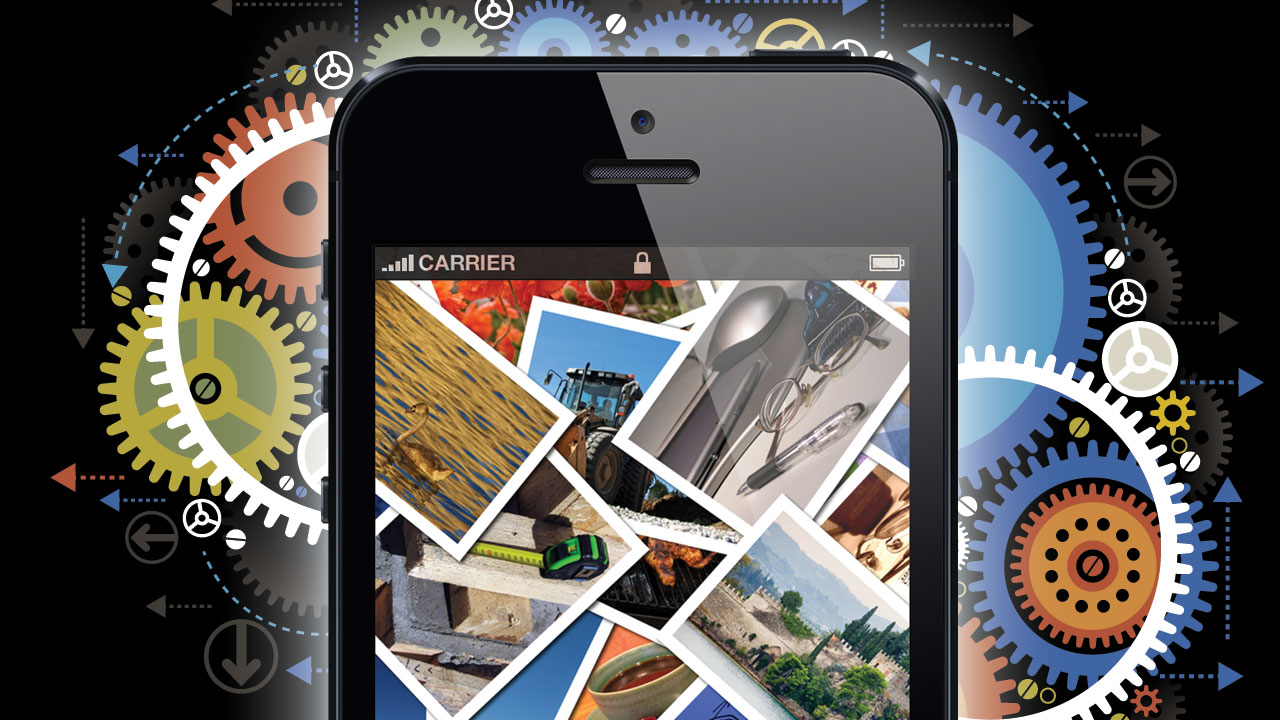
With media and memory, the device is now all right - the built-in iOS allows you to optimize storage by moving the photo originals to iCloud, plus there are many third-party solutions that allow the machine to transfer heavy pictures to the cloud, immediately removing the originals from the internal memory (Dropbox, Google Photo, “Yandex.Disk”, etc.).
But with the programs, everything is not so smooth - not only does the application grow not weakly within the internal memory from 50 to, say, 300 megabytes only due to the cache, so not every mobile software in the settings has the ability to quickly clean this cache in one click.
Instagram so generally advised one time to simply remove the application and reinstall it when its dimensions began to exceed all limits. Fresh versions of iOS allow you to download unused software to optimize space, in Android, the user can clean the cache with pens or find a separate tool for this.
And it seems that almost all the threats have passed, but there is one more - the size of the clean application itself, without the cache, which has recently been growing at a much higher rate than the built-in memory of smartphones.
Analysts from SensorTower have compiled a report that demonstrates how much the size of applications has increased in recent years. The counting system was as follows - they counted a place in memory, which occupied the 10 most downloaded apps for iOS in May 2013, and traced the increase in memory occupied until May 2017. And the result, frankly, inspires.
List of applications based on the size of the study.
● Facebook
● Uber
● Gmail
● Snapchat
● Spotify
● Messenger
● Google Maps
● YouTube
● Instagram
● Netflix
In principle, the guys from Cupertino gave the process part of the process - they increased the maximum size of applications for the AppStore. In addition, we should not forget about the new features of applications - the masks in Snapchat, the masks in Facebook, the beloved by many iPhone owners, the opportunity to “Explore the Facebook camera” randomly swipe to the right - all this also affects the size of the application upward.
There is also an opinion that developed frankly relaxed - they say, if the volume of the built-in memory of smartphones is growing anyway (though not as vigorously as applications), then you shouldn’t strain about optimization and size reduction. Anyway, the app will weigh 40 megabytes or 300 - the user is unlikely to refuse to put it, having 60 gigabytes on board.
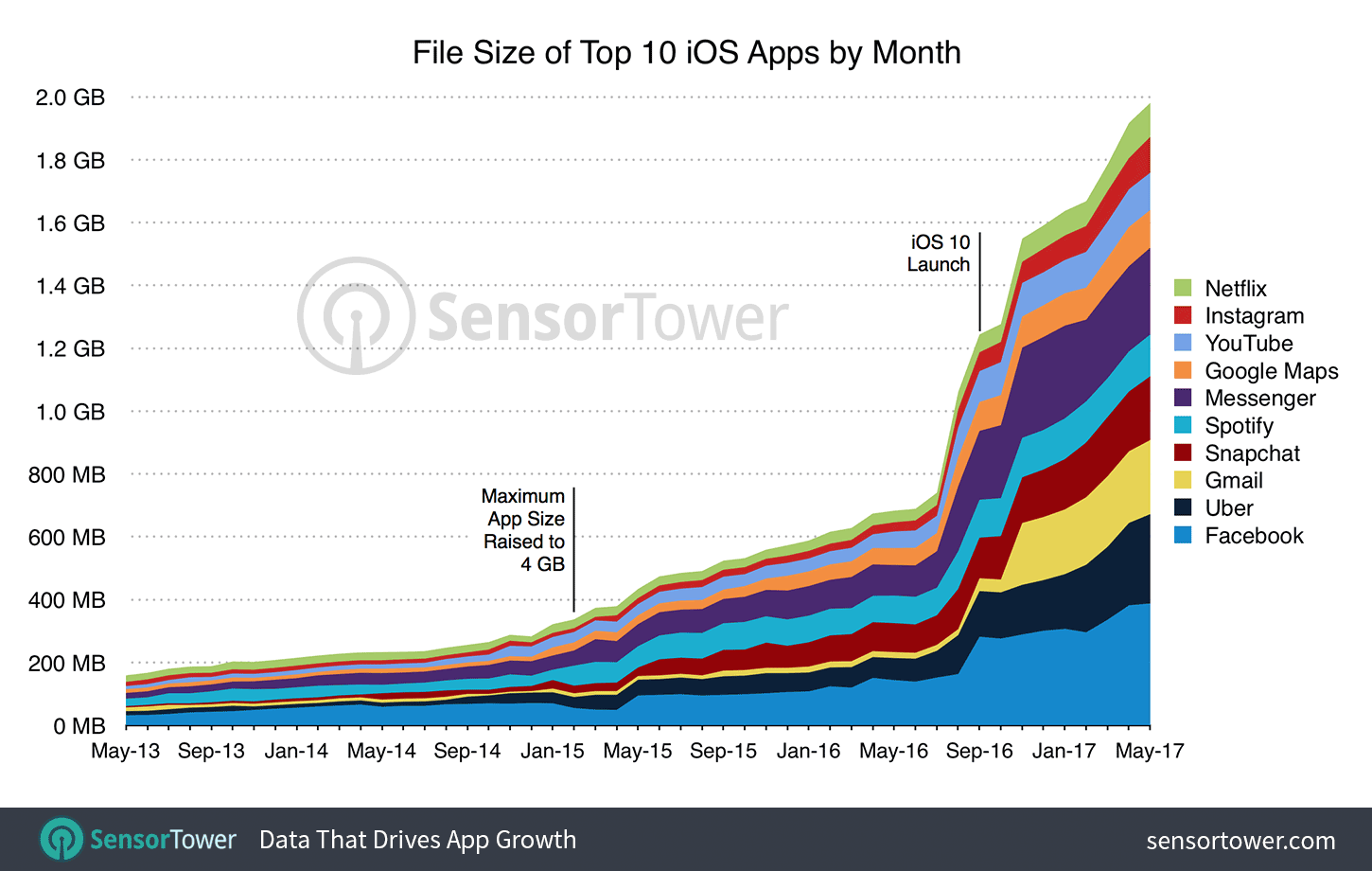
One more time - in May of 2013, this entire set of 10 applications occupied 164 megabytes, and in a little over 4 years it grew to almost 2 gigabytes.
Snapchat is particularly distinguished, becoming heavier 50 times (in 2013 - 4 megabytes, in 2017 - 203)!
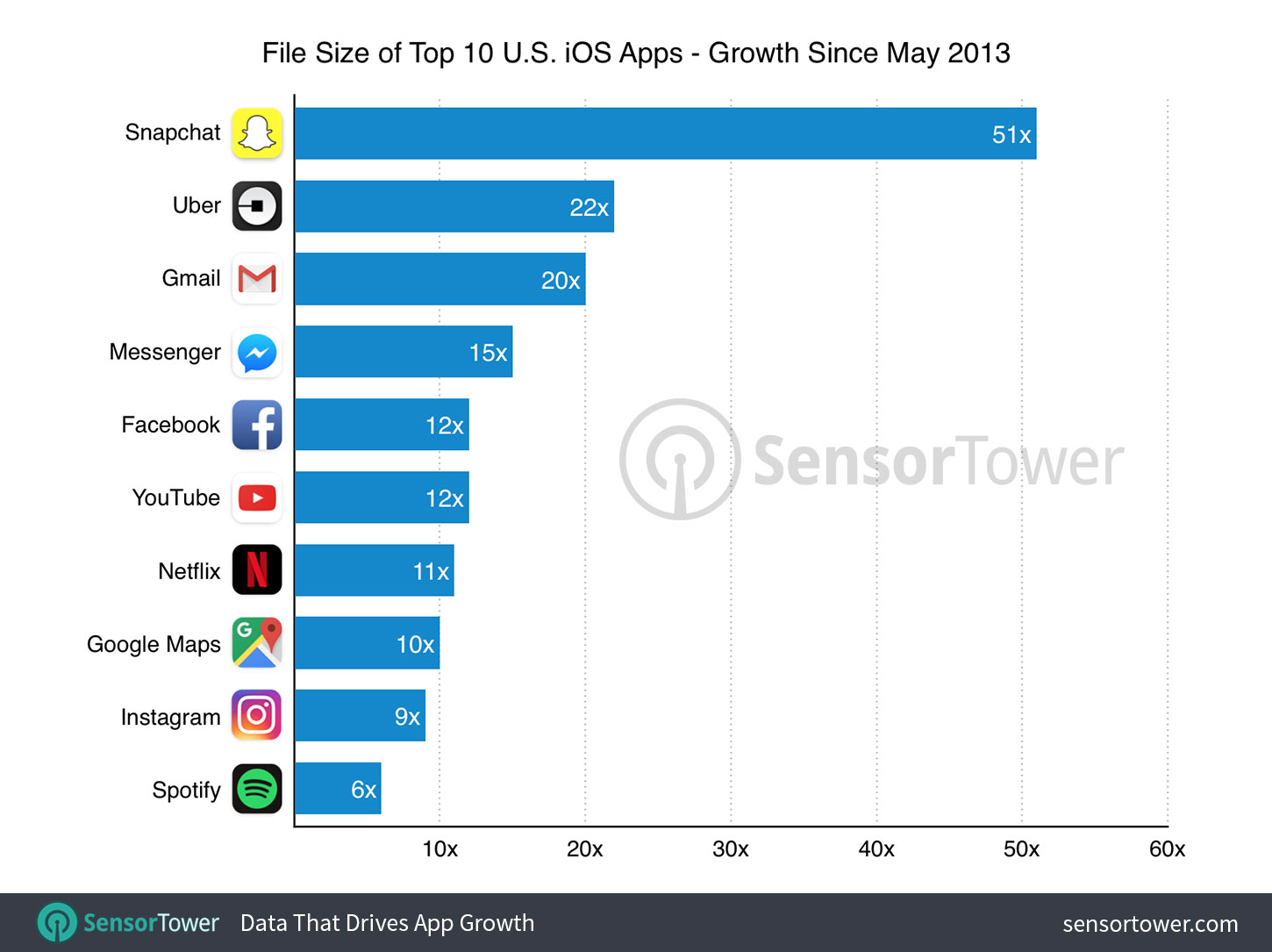
About the game in this regard, and say nothing. Of course, there are always small light kazualki and stuff, but the same Asphalt 8 for iOS now weighs about 2 gigabytes.
Of course, you can simply advise the user not to install heavy applications and not to fill the cache in order to comfortably turn on all of their 32 gigabytes, but there are cases when downloading data offline is more than justified.
1. Maps and navigation. It is always easier to download the desired area with access offline and spend a little space than suddenly in another city (or country at all) convulsively download a map of the city via the mobile network, also taking off in roaming.
2. Music. “Yandex.Music”, Apple Music and Google Music allow you to download albums into the memory of your smartphone, which helps to avoid a similar situation and not to waste the quota of cellular traffic in order to immediately download your favorite album.
3. Documents. Sometimes whole folders with Google Disk are easier and more useful to have it with offline access.
Total for a user who likes to travel to different countries, listening to music in the process and working in the breaks at the cafe, the memory in the smartphone (if the board is small) is hammered once or twice.
And there are three ways out of this situation.
1. Go and buy a smartphone with enough memory (128 gigabytes and above)
Everything is simple here, but not for everyone.
2. Configure Storage Optimization
We use the built-in iOS and Android to keep everything heavy in the cloud and automatically removed from the internal memory. If you do not like regular means, there are third-party solutions for the media - Dropbox (the carousel was moved to the application), Google Photo (it unlimitedly saves all your photos in good quality to the cloud, the originals are already on account quota), Yandex.Disk (autoloading photos and videos from an unlimited smartphone).
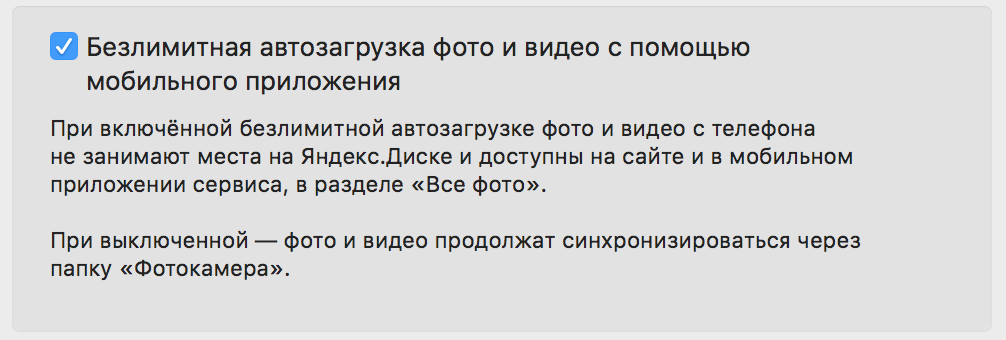 Yandex.Disk
Yandex.Disk Google photo
Google photo3. Use memory cards and similar utilities.
At this point, iOS users can again return to the study of the work of cloud services. Although the two fresh iPhones (X and 8) have few memory options, 64 and 256 (which is quite for themselves), the seven and its predecessors always remain, where there are also versions for 32, which are really not enough.
Unfortunately, memory cards at the moment can only be installed on smartphones on the Android OS (depending on the vendor’s favor).
Memory cards
The easiest way to increase the memory capacity of your Android smartphone. We have released several lines of micro-SD cards:
● microSD-cards of class
10 UHS-1 (45 MB / s for reading, 10 MB / s for recording), this is enough for adequate work with HD video recording;
●
Gold series , (90 MB / s for reading, 45 MB / s for recording) allows you to write video in 4K at 30 frames per second and HD - at 120 frames per second.
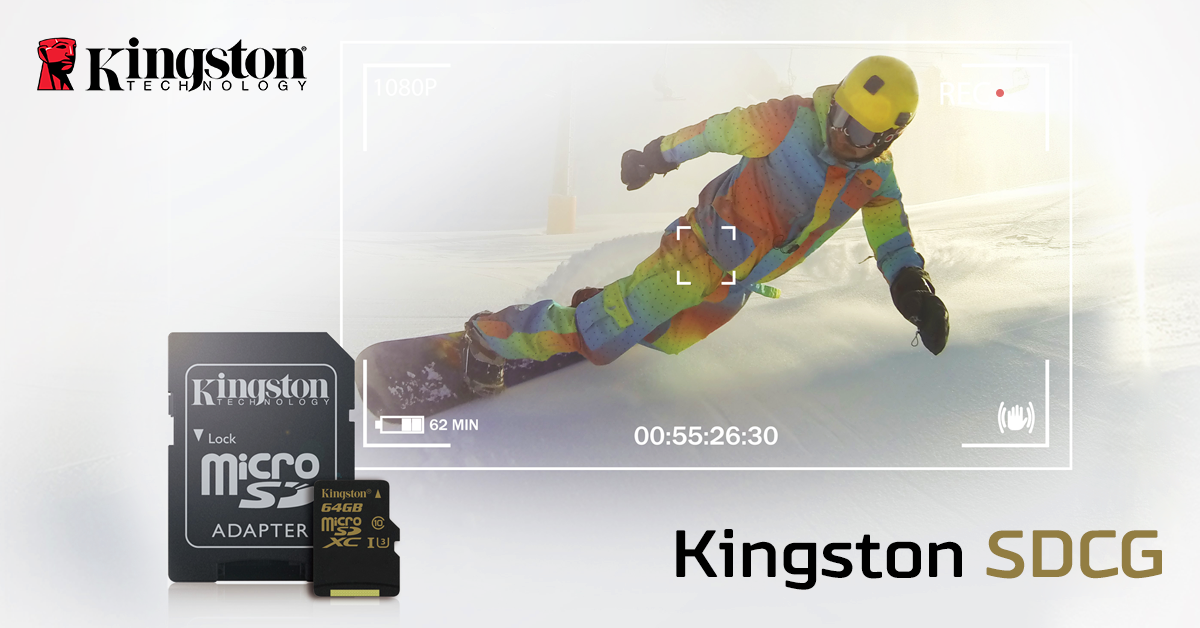
So far, the biggest Gold-series cards will help you increase the memory of the device by 64 gigabytes, but 10 UHS-1s have up to 256 gigabytes.
OTG flash drives
Not as elegant as a memory card in a smartphone's case, but it can also help out in some situations - a miniature USB flash drive with USB 3.0 - microUSB connectors that allows you to view the files you need by simply connecting it to an OTG-enabled smartphone.
DataTraveler microDuo 3.0 - from 16 to 64 gigabytes.
An even more interesting option is
MobileLite Duo 3C . This is a flip-flop reader that can be turned into a storage of memory available for any gadget. With absolutely tiny dimensions, it is simultaneously equipped with USB-A and USB-C connectors, while supporting any microSD / SDHC / SDXC, UHS-I cards.
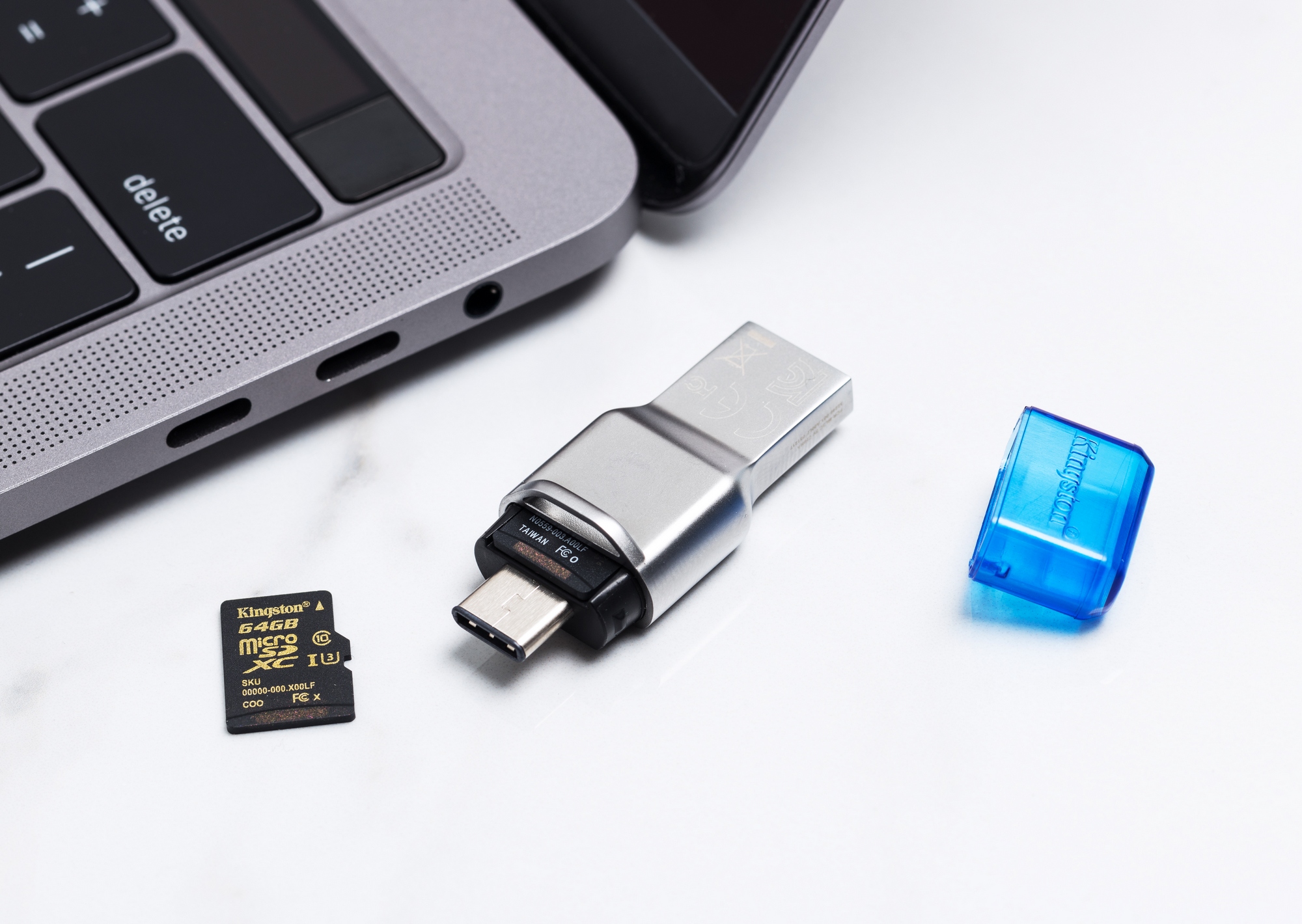
MobileLite Wireless G3
Our one-
stop solution for several problems at once.
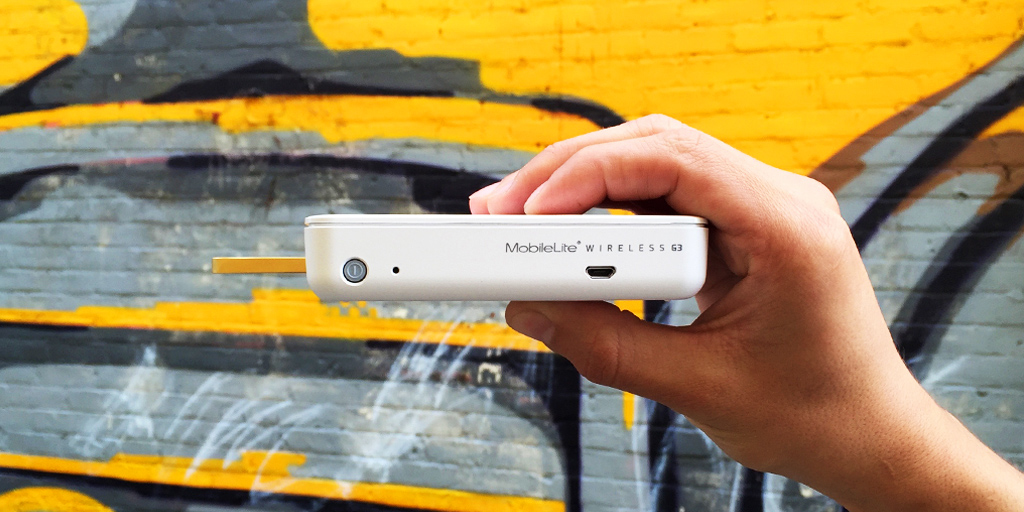
Firstly, it is an external battery that can fully charge the smartphone twice (it was tested on iPhone 6). Yes, this is not a ceiling for banks in our time, MobileLite models are 5400 and 6700 mAh, but charging is not the main function of the device, but only the cherry on the cake.
Secondly, it is a reader for SD-cards and USB-flash drives.
And thirdly, it can be used to access all data from these memory cards and flash drives wirelessly directly from a smartphone using an application (Android, iOS). Simply insert a card or flash drive into MobileLite - and view their contents from your smartphone. Movies, music, photos, documents - all of this can be stored on a memory card, which will be in MobileLite, lying, say, in a backpack or simply within a WiFI radius (the device works in the 2.4GHz 802.11b / g / n and 5GHz 802.11 bands ac).
That is, even if you do not have a card slot on your Android smartphone, or there is not enough space on your iPhone, even with all the optimization, the MobileLite Wireless G3 will help.
What's next?
Most likely, applications will be harder and harder, since they will receive more and more new functions, and the built-in memory in smartphones will be more and more.
At the moment, the internal memory is still not keeping pace with the size of the applications. Moreover, now the average user in the number of applications like “It is necessary to put on a new smart” is no longer 2-3 pieces, but more than a dozen. Of course, there is progress here too, hardly anyone in 2015 thought that in a couple of years there would be 256 gigabytes of onboard memory in the iPhone.
But photos and videos are getting harder, applications are increasingly reminiscent of media combines, so in the next couple of years, users will hardly be able to further increase the storage capacity.
If we talked about 2017 and the amount of internal memory - how much would be comfortable for you and your usage scenarios? And how do you struggle with when there is not enough memory?
Subscribe and stay with us - it will be interesting!
For more information about
Kingston and
HyperX products, visit
the company's official website .

Our country is broad, so we prepared shares at once in several network partner stores - everyone should be able to get HyperX accessories as close as possible to home and as quickly as possible. Until January 12, you can purchase peripherals with maximum discounts:
•
1000 rubles discount - for
HyperX Cloud Stinger headset
•
2000 rubles discount - on
HyperX Alloy FPS keyboard with Cherry MX switches (optional Brown / Blue / Red)
•
1000 rubles discount - for
HyperX Cloud Silver headset
•
700 rubles discount for
HyperX Pulsefire FPS mouse